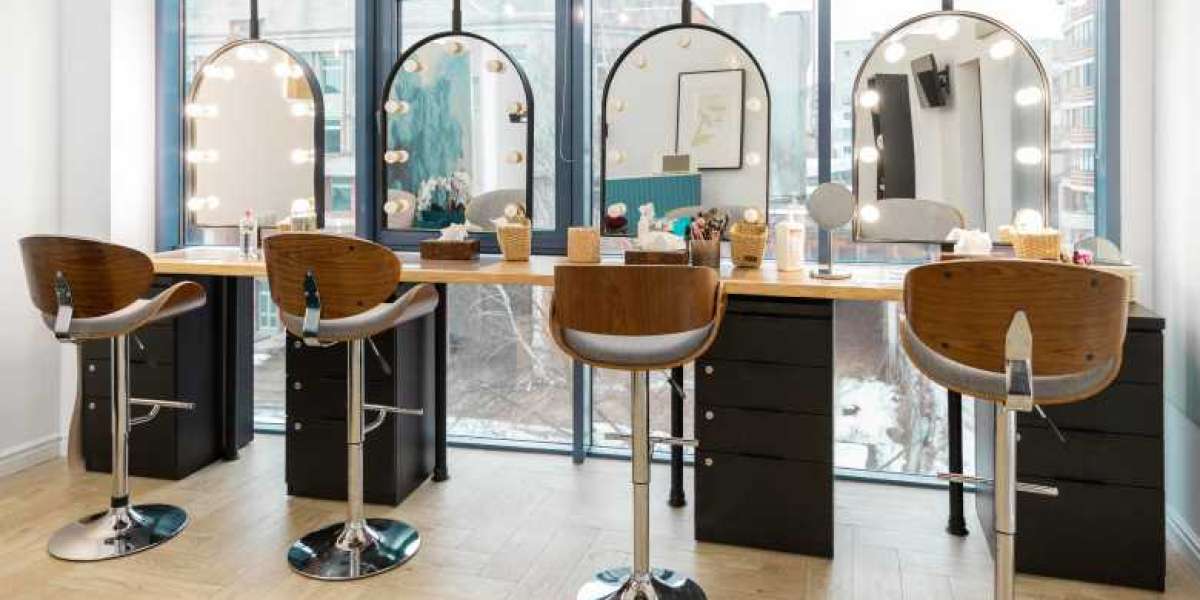Seating Position: The way you sit or lie down while doing your skincare routine matters. For instance, if you're hunched over a bathroom sink or vanity, it can strain your neck and back, potentially leading to tension headaches or muscle stiffness. Investing in a comfortable chair or stool with proper support can help you maintain a relaxed posture, reducing the risk of discomfort during your skincare routine.
Storage and Organization: Proper storage and organization of skincare products are crucial for maintaining their efficacy. Cluttered or poorly organized furniture can lead to confusion and make it difficult to find the products you need. Consider investing in storage solutions such as shelves, cabinets, or vanity organizers to keep your skincare products neatly arranged and easily accessible.
Lighting: Good lighting is essential for skincare routines, as it allows you to see what you're doing clearly and ensures that you apply products evenly. Furniture with built-in lighting features, such as mirrors with integrated LED lights or vanity tables with adjustable brightness settings, can enhance your skincare experience by providing optimal illumination.
Comfort and Relaxation: Your skincare routine should be a relaxing and enjoyable experience, but uncomfortable furniture can detract from that. Investing in a cozy armchair or plush vanity stool can make your skincare routine feel more like a pampering ritual, encouraging you to take your time and fully enjoy the process.
Proper Surface for Product Application: Some skincare routines involve sitting or lying down while applying products, such as masks or serums. Having a clean and comfortable surface to rest on, such as a soft rug or cushioned bench, can make these steps more pleasant and help you avoid accidentally spilling or dropping products.
Humidity and Temperature Control: Certain skincare products, such as creams and serums, may be sensitive to changes in humidity and temperature. Furniture that provides adequate ventilation and moisture control, such as open shelving or mesh storage baskets, can help prevent moisture buildup and maintain the stability of your skincare products.
Hygiene: Cleanliness is essential for maintaining healthy skin, so it's important to keep your skincare environment clean and hygienic. Choose furniture with smooth, non-porous surfaces that are easy to wipe down and disinfect regularly to prevent the buildup of dirt, bacteria, and other contaminants.
By paying attention to the furniture you use in your skincare routine and making thoughtful choices, you can create a more comfortable, organized, and effective skincare environment that promotes healthy, glowing skin.
Ergonomics: The design of furniture directly affects body posture during skincare activities. Improper posture can lead to muscle strain and discomfort. Ergonomically designed chairs or stools with lumbar support and adjustable height can promote proper alignment of the spine, reducing the risk of musculoskeletal issues during prolonged skincare sessions.
Storage and Organization: Effective storage solutions are essential for organizing skincare products. Furniture with multiple compartments, drawers, and shelves allows for systematic arrangement, preventing clutter and ensuring easy access to products. Adjustable shelving units accommodate varying product sizes and shapes, optimizing space utilization.
Lighting: Adequate lighting is crucial for accurate skincare application and assessment. Furniture integrated with adjustable LED lighting offers customizable illumination levels, catering to different skincare tasks and environments. LED mirrors with high Color Rendering Index (CRI) provide natural-looking light, enhancing color accuracy for precise makeup application and skincare analysis.
Comfort and Relaxation: Comfortable furniture contributes to a relaxing skincare experience. Soft, upholstered seating options with ergonomic contours alleviate pressure points and promote relaxation during extended skincare routines. Adjustable reclining features enable users to customize their seating positions for optimal comfort and support.
Surface Materials: Furniture surfaces should be selected for their compatibility with skincare activities and ease of cleaning. Non-porous materials such as stainless steel, glass, and acrylic are resistant to moisture and facilitate hygienic maintenance. Furniture finishes with antimicrobial properties inhibit bacterial growth, ensuring a clean and sanitary skincare environment.
Temperature and Humidity Control: Furniture materials should not be susceptible to warping or degradation under fluctuating temperature and humidity conditions. Moisture-resistant wood composites and metal alloys maintain structural integrity in humid environments, preventing mold and mildew formation. Ventilated furniture designs promote air circulation, minimizing moisture accumulation and preserving skincare product efficacy.
Accessibility and Reachability: Furniture layout and placement influence the accessibility of skincare tools and products. Adjustable vanity mirrors with swivel mechanisms allow for versatile positioning, accommodating users of different heights and preferences. Freestanding furniture pieces with mobility features enable convenient reconfiguration of the skincare workstation, enhancing workflow efficiency and task accessibility.
By considering these technical aspects of furniture selection and design, individuals can optimize their skincare environment for comfort, organization, hygiene, and functionality, ultimately enhancing the efficacy and enjoyment of their skincare routines.








